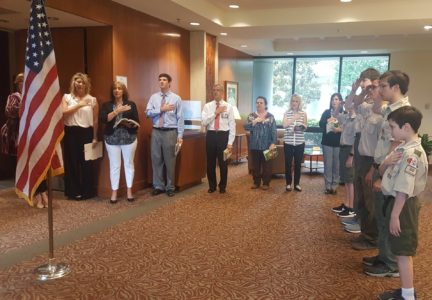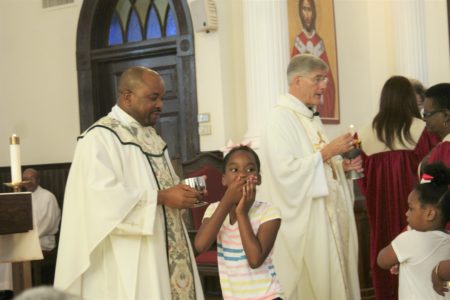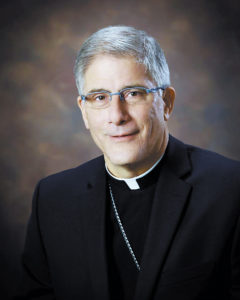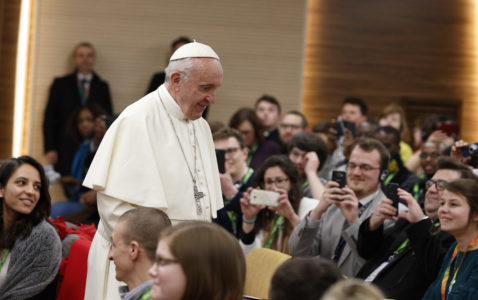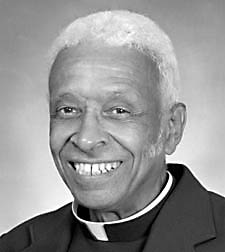SPIRITUAL ENRICHMENT
CULLMAN, Ala., Benedictine Sisters Retreat Center, Letting Go and Letting God: The Wisdom of Twelve-Step Spirituality. This reflection day will focus on the core principles of twelve-step spirituality and the gift of spiritual freedom that is experienced when these principles are put into practice. Tuesday, August 28. Retreat Director: Sister Therese Haydel, O.S.B. Cost: $30 includes lunch. Details: (256) 734-8302, retreats@shmon.org or www.shmon.org.
GREENWOOD Locus Benedictus Retreat Center, Grace for the Journey Training for Caregivers, Sunday, July 29 at 2 p.m. This training is for family, friends, clergy or employees who take care of people suffering from any illness or injury. Presenters: Catherine Kidd and Charlene Gressett. Details: (662) 299-1232.
METAIRIE, La., “Fresh Fire 2018,” a day-long gathering for those desiring refreshment and empowerment in the Holy Spirit, will take place Saturday, August 25, 10 a.m. – 3 p.m., at St Benilde Cafeteria, 1901 Division St., Metairie. The event is sponsored by the Catholic Charismatic Renewal of New Orleans (CCRNO). The theme for the day is “Return to Your First Love” and will focus on the call of the Lord to us now. Registration is $30 per person and includes lunch. Special price for youth ages 18-30, $10. Register online at www.ccrno.org no later than Wednesday, August 22, noon, to reserve your lunch. Details: Call CCRNO at 504-828-1368 for more information.
PARISH, SCHOOL AND FAMILY EVENTS
CLARKSDALE Northwest Mississippi Medical Center, A Healthy Night Out for Ladies, Thursday, July 19, at 6:15 p.m. in the private dining room. This event is free and features numerous speakers and exhibitors, including a skincare presentation from parishioner Lisa Chicorelli. Details: St. Elizabeth church office (662) 624-4301.
HERNANDO Holy Spirit, All Parish Picnic, Sunday, July 29. Chewalla Lake Recreation Area, 726 Chewalla Lake Rd., Holly Springs, 3-5 p.m. Mass at 5 p.m. swimming, food and fun! Bring a side dish to share and drinks for family. The meat will be provided. Don’t forget your chairs. Details: (662) 429-7851.
JACKSON St. Andrew’s Episcopal Church, Save the Date, Level II Training for Catechesis of the Good Shepherd. Classes are: August 11, September 8, October 6, November 2-3, December 1, January 4-5, February 1-2, March 2, April 6 and May 4. Cost: $675, which includes course materials, lunch, snacks and certification by the National Association of the Catechesis of the Good Shepherd, USA. A non-refundable deposit of $100 is due by August 1. Details: Rachel Misenar, rmisenar@standrews.ms or (601) 573-3689.
Catholic Charities, Mississippi Catholics against Human Trafficking (MCAHT) will meet at Catholic Charities, 850 East River Place, Jackson on Monday, July 23 at 4:30 p.m. Details: For more information, contact Dorothy Balser, dorothy.balser@ccjackson.org or (601) 941-4600.
Christ the King, National Black Catholic Men’s Conference in Richmond, Virginia, October 18-21. Fifteen years of fellowship among men who have been forged by faith and experience. Registration forms are available on the table at the back of the church. Details: church office (601) 948-8867.
St. Richard, ChristLife: Discovering Christ, Mondays from August 20 and ends October 1 at 6:30 p.m. with a retreat on Saturday, September 22. Explore answers to questions such as, “How does knowing Jesus really make a difference? Dinner and program offered at no cost. Seating is limited. Details: (601) 366-2335, register at www.saintrichard.com.
NATCHEZ St. Mary Basilica, Choral Concert, Wednesday, July 18 at 7 p.m. Free admission and open to the public. Guest Conductor: Dr. Rollo Dilworth. Details: (601) 445-5616.
SHAW St. Francis of Assisi, Religious study of Rediscover Catholicism by Matthew Kelly, Fridays at 9:30 a.m. after Mass. Details: church office (601) 754-5561.
YAZOO CITY St. Mary, Parish Potluck Lunch, Sunday, July 29, after 10:30 Mass in the Parish Hall cafeteria (changed from an earler date). The church will provide the meat, bread,and drinks. Parishioners’ last names A-D, please bring a salad, E-H, please bring a meat or vegetable casserole, I-Q, please bring a vegetable, R-Z, please bring a dessert. There are sign-up sheets in the back of the church. Details: (662) 746-1680.
SAVE THE DATES
JACKSON Catholic Charities welcomes Jim Caveziel Friday, Sept. 7, 7:30 p.m. at Thalia Mara Hall. Tickets start at $25. Group rates are available. Details: Catholic Charities (601) 355-8634 or www.catholiccharitiesjackson.org.
Diocesan Middle School Retreat: October 13-14, Lake Forest Ranch, Macon, Miss. Lead by young adults from NET Ministries. This retreat is open to youth in 7-8th grade. Registration will open late August 2018.
Correction:
A story in the last issue of Mississippi Catholic misidentified the president of the Sisters of Charity of Nazareth, Sister Susan Gatz, who delivered a victim’s impact statement during the sentencing hearing for Rodney Earl Sanders. We regret the error.
